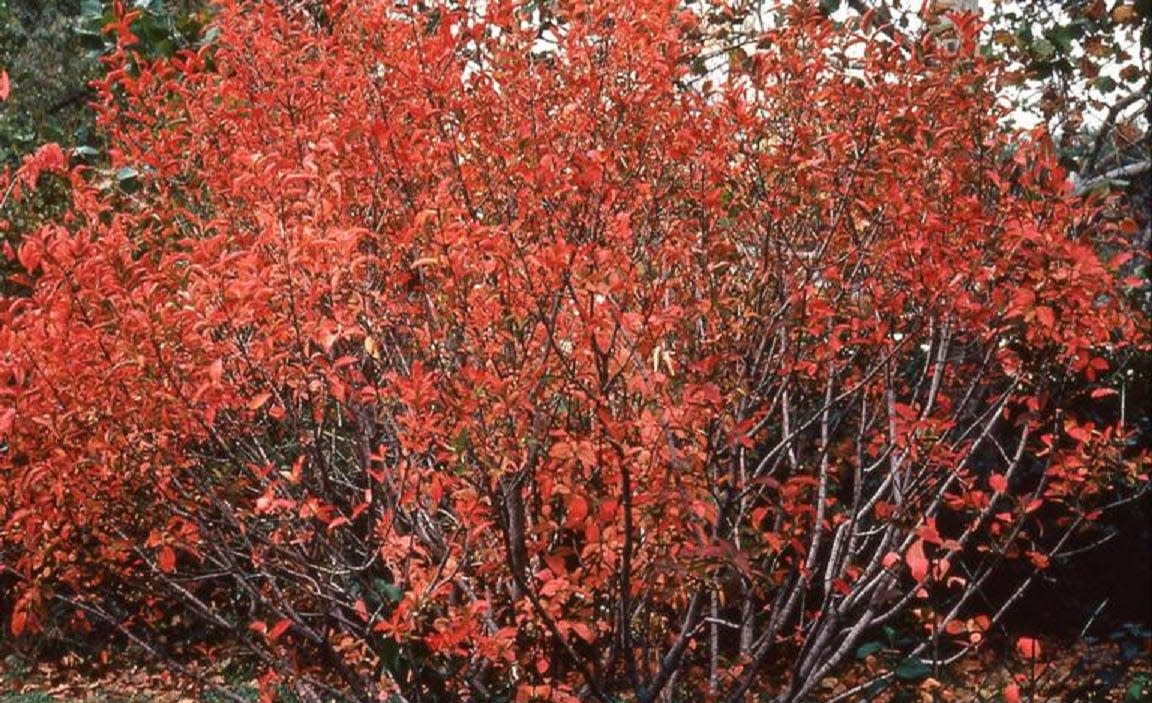Good burning bush or the bad one - plant names can cross over between native, non-native
While I was doing some internet surfing this spring I came across some articles discussing beneficial native plants to add to your landscape. I initially skimmed over the content, but noticed a hefty number of comments on the article and decided to see what the cause of the discussion was.
Many were quick to point out that article had listed a “burning bush” as a recommended species to plant. The concern was based on the extremely invasive species Euonymus alatus, which also has the common name “burning bush."
What I quickly realized is some very beneficial native plants can easily be confused with highly invasive non-native plants simply because of overlapping common names. This can lead to a lot of confusion while trying to make decisions when purchasing plants.
“Burning bush” and “burning bush” are two very different plants and are on the opposite end of the spectrum in their value as a plant in our landscape and their associated ecosystem benefits. Seems easy enough to understand right? Obviously, having plants with shared common names can be incredibly confusing.

I already introduced you to the invasive burning bush, Euonymus alatus. This non-native invasive species from Asia does have vibrant fall colors, however, the negative impacts far outweigh the aesthetics of this bush. Winged euonymus started out as a very popular landscape plant, being placed around shopping center parking lots, industrial parks, and housing developments.
Prolific seeds producers, displace native plants
Since the 1970s, it has been establishing in natural areas such as woodlands, wetlands and prairies. Once established in these natural areas, they are prolific seed producers, can spread via vegetative reproduction, have very little predatory pressure and are able to outcompete and displace our native plant species.
Our native burning bush is Euonymus atropurpurea. Native burning bush is also known as Eastern Wahoo or Spindle Tree. This native bush provides habitat and resources for numerous insect species, several bird species and browsing mammals.
Another example of this conundrum involves honeysuckle. There are the Asian Bush Honeysuckles: Amur, Morrow, and Tatarian (Lonicera maackii, Lonicera morrowii, and Lonicera tatarica) and Japanese Honeysuckle (Lonicera japonica). There are two native bush honeysuckles − bush honeysuckle (Diervilla lonicera) and Canada fly honeysuckle (Lonicera canadensis) − which may be confused with the non-natives.

On a recent tour through Secrest Arboretum, curator Jason Veil pointed out a specimen of native bush honeysuckle. The crowd surrounding Jason quietly gasped and had a look of concern on their faces, due to the mention of honeysuckle. As Jason shared with us about the native bush honeysuckle, he mentioned this was a common reaction to the mention of the name, or really any plant name that crosses over between native and non-native invasives.
Other commonly confused species based on common names include: bittersweet (American Bittersweet is native, Oriental Bittersweet is invasive), sumac (Tree of Heaven, sometimes called stinking sumac is an extremely aggressive non-native species, while Smooth and Staghorn Sumac are native to Ohio and are great plants to have in the landscape), or viburnum (European Cranberry-bush viburnum, Viburnum opulus, is a non-native invasive, while native viburnums like Viburnum trilobum, Viburnum denatum, Viburnum prunifolium or Viburnum acerifolium are all native species that are great alternatives to the non-native species.)
When in doubt about a plant, research it
Needless to say, the world of plants can get confusing very quickly. Where you are located in the state or in the country can also contribute to more confusion when regionally acceptable names may mean something completely different to someone not from that area. Attention to detail and thorough investigating are critical to ensure that we are not purchasing and planting a species of plant that will contribute to the ongoing struggle of dealing with non-native invasive plants.
When in doubt with common names, take time to read the scientific names and do a little research to make sure you are actually buying what you think you are buying. The Ohio Division of Wildlife has a factsheet called “Alternatives to Ohio’s Invasive Plant Species,” which is an excellent resource to have on hand when shopping nurseries, garden centers and greenhouses. This factsheet can also be found on the Ohio Invasive Plant Council website, where you can find further information and additional resources.
There are a lot of great plant species you can add to your landscape, both native and non-native. The important responsibility that we all carry to is to prevent non-native, invasive species from escaping our yards and gardens and creating long lasting challenges, as we have seen happen with the species mentioned above. When in doubt, reach out to your local extension office or other local professionals to help you make educated decisions about which plants you are adding to your landscape.
Frank Becker is the Agriculture and Natural Resources Extension Educator with Ohio State University Extension – Wayne County, and a Certified Crop Adviser, and may be reached at 330-264-8722 or becker.587@osu.edu.
This article originally appeared on The Daily Record: Invasive or non-invasive? Plant names can sometimes be misleading
